What Is a Connecting Flight
A connecting flight is a flight that passengers transfer to in order to continue to their final destination. This typically occurs when a passenger's final destination is not serviced by a direct flight from their origin, so they have to take a connecting flight to another airport where they can catch a second flight to their final destination.
Table of contents
- What are the main benefits of a connecting flight?
- What are the downsides of a connecting flight?
- How to prepare for a connecting flight
- How to manage your time in between connecting flights
- Is my luggage at risk if I have a connecting flight?
- How can I prepare if my bag is lost due to a connecting flight?
- How to stay healthy during long connecting flights
- Common mistakes to avoid when choosing a connecting flight
This article may contain affiliate links. We earn a small commissions when you purchase via those links — and it's free for you. It's only us (Becca & Dan) working on this website, so we value your support! Read our privacy policy and learn more about us.
What are the main benefits of a connecting flight?
A connecting flight refers to all flights that are not nonstop (direct) from one destination to another, on the same airline.
Connecting flights are also referred to as “connections.” For example, I flew from Mexico City to NYC, with a connection in Miami, FL. This means I took one flight from Mexico City to Miami, had a layover, and then continued to take a flight from Miami to NYC, thereby getting me to my home.
The benefits of a connecting flight are that it is a way to save you money when booking flights and traveling. Oftentimes, flying nonstop from one destination to another (especially if far away or from a small airport) can be very expensive. By purchasing a flight with a connection, you could save hundreds to thousands of dollars, depending!
Another benefit of having a connecting flight is that you could get away with some time to visit a new city during the connection. Be careful that you get back to the airport in time for the second leg of your journey, though, because you don’t want to miss that connection to your final destination!
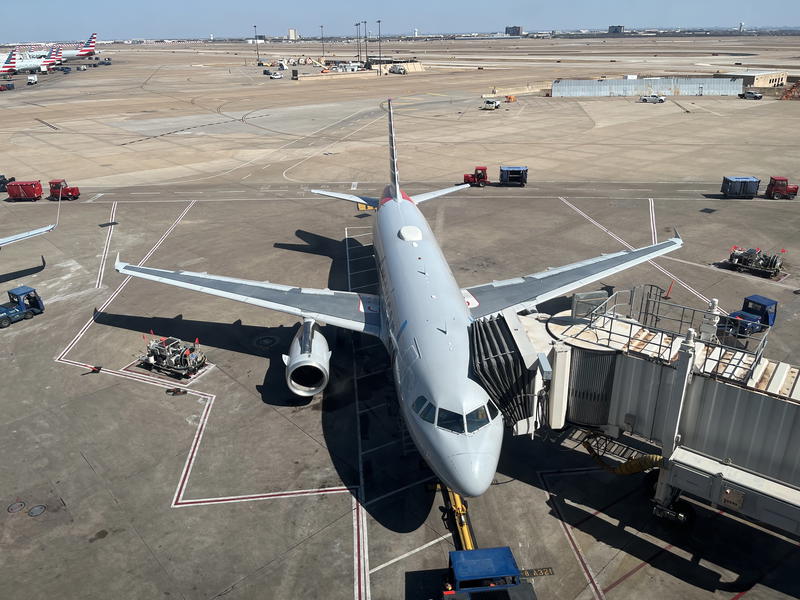
What are the downsides of a connecting flight?
Despite the facts that connecting flights can get you pit stops in cool cities and save you some money, there are some downsides to consider.
First, you will get to your destination more “slowly,” when compared to one-way nonstop flights. This year, I traveled for business from Newark to Kentucky, with a connection in Atlanta during both the inbound and outbound flights. I was lucky that I did not experience any delays whatsoever and that everything went smoothly. However, if nonstop flights had been available, I could’ve arrived in Kentucky in half the time for sure.
Next, with connecting flights, there’s more risk for having lost luggage. This is because the more times luggage gets transferred from one aircraft to another, there is a risk for mishandling. (A way to combat this is to put Apple AirTags on your suitcase, so if it winds up going to the wrong destination, or just getting stuck in a luggage room at the correct one, you’ll be able to track it.
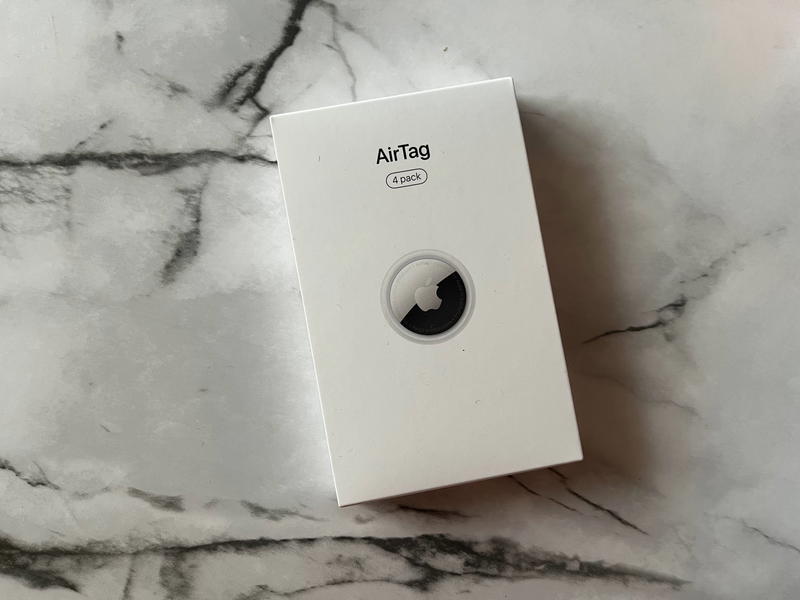
AirTags also come in a four-pack which is nice for putting on your backpack, laptop, wallet and whatever else you want to be able to trace if it became misplaced.)
Thirdly, a downside of a connecting flight when flying internationally is that you might have to go through security again if you have a connecting flight while reentering the United States.
This was precisely the case when we flew into Miami for our connection from Mexico City to NYC. Because we were entering the US in Miami before NYC, we had to go through customs declarations and then re-enter through security checks, all while making the connection in time (luckily we had five hours to spend in an airline lounge).
Lastly, any delays during the connection will delay you onward to your final destination. When we flew from Vancouver to New York City with a connection in Toronto, we were delayed during the Toronto connection. We actually boarded the plane, were told to then get off, and then re-board. It was not fun!
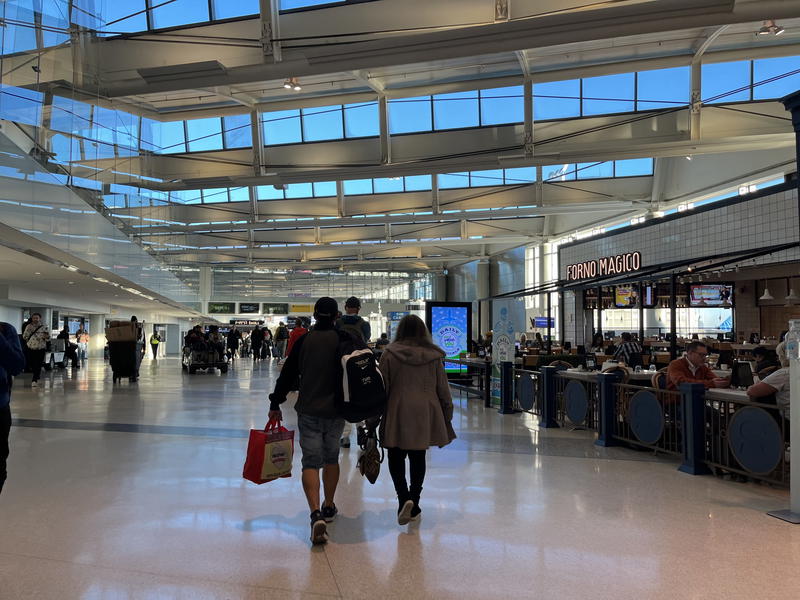
How to prepare for a connecting flight
To prepare for a connecting flight, make sure that you are organized, and are able to collect all of your items when you get off the plane. It can be easy to leave items behind.
Bring plenty of snacks with you. You can pick up a few things before your travel day. Multiple connecting flights mean multiple visits through airports.
Almost all airports have terribly high prices or bad selection on food items. Check out our favorite list of travel snacks for this.
Bring your own entertainment. Your risk for not having a functional media console on the airplane or a bad selection of content increases during every connecting flight you are on during your trip. You also may want to watch something (and charge your device) while you’re on that layover.
If you have Netflix, you can download movies and TV shows to your phone or iPad. This is what I do, and it’s a game-changer!
Pack an extra pair of clothes in your carry-on luggage or personal item. If your connecting flight is delayed, or canceled, you might have to spend the night in your current destination. You’d be happy you packed a change of clothes if that happens, and if your checked luggage is already checked through.
Lastly, make yourself some alarms or calendar reminders for the exact timeframes when you need to be at your boarding gate during the connection.
Leave some extra time in case it’s a really far walk, or for changing terminals. While I was on a connection to Guatemala earlier this year, I had to RUN (literally, run!) to catch the air tram from one terminal to another in Dallas, in order to make the connecting flight.
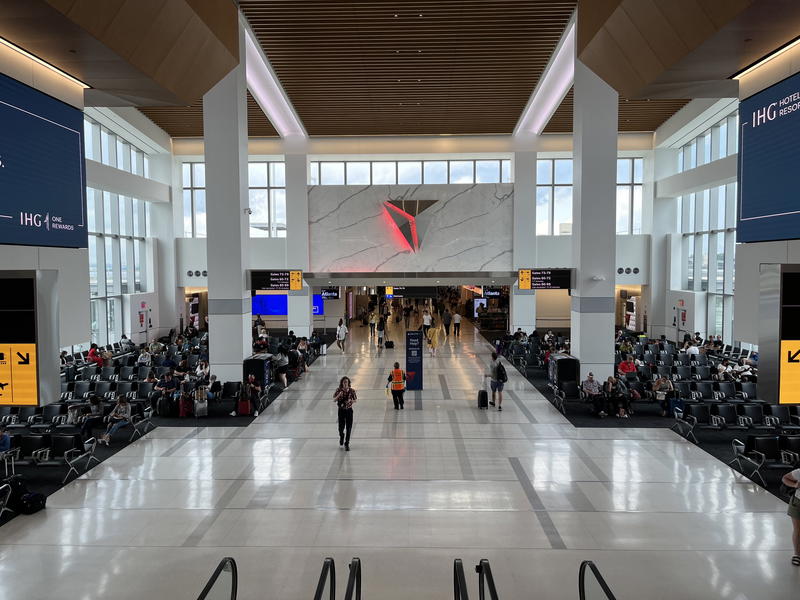
How to manage your time in between connecting flights
Connections can be really short (50 minutes!) or pretty long (10 hours). To prepare, do these things!
Charge all of your devices
Having downtime in the airport is a great time to charge your phone, laptop or anything else you have with you.
Check out an airline lounge
Visiting airline lounges during flight connections has become one of our favorite ways to pass the time in airports. You can see all about how we became lounge experts in our full guide to airport lounges. We mostly learned about these types of perks through travel hacking.
If you want to have access to airport lounges during your connections just like we do, check out Priority Pass and sign up for a membership today.
Check for flight updates
I’ve been through some funky scenarios recently whereby the airline app did not send a proper notification that a boarding gate had changed and that a flight was leaving early. I’ve also had some connecting flights that were delayed, delayed more and delayed again.
Always check for flight updates, and I suggest checking the status of your connecting flight both in the airline app or online, at the gate itself and on the big flight status boards in the terminal near the gates.
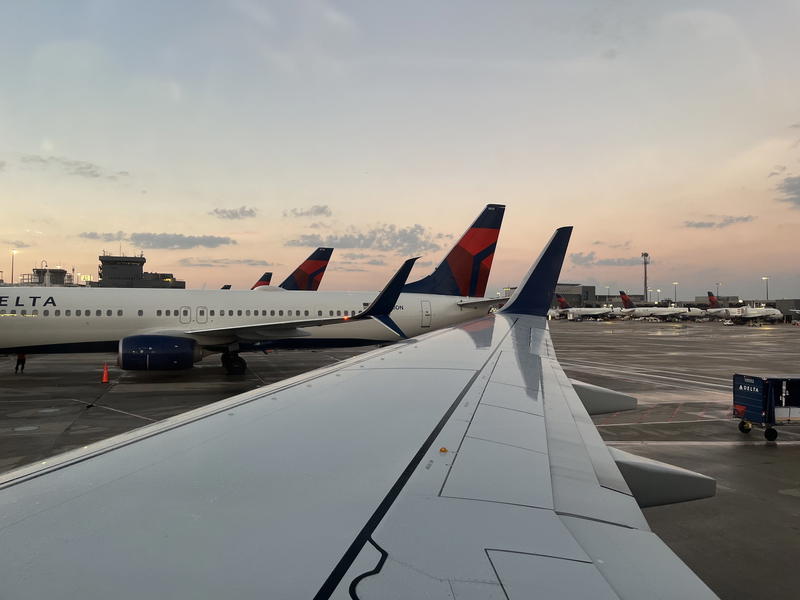
Is my luggage at risk if I have a connecting flight?
In my opinion, your luggage is always at risk the moment you lose sight of it. I almost always use a carry-on, if possible.
I know that’s not a possibility for everyone, and especially in certain situations. Hey, I’ve had to check luggage, too! But, I digress.
There’s a heightened risk any time an airport employee handles your bag and especially when they have to deal with a transfer because of a connecting flight. Short connecting times are especially risky for checked bags. The bags just might not make it onto the connecting flight, especially if it’s in another terminal during the connection.
There are a lot of bags that get checked and that are transferred between flights every day. Most of the time, your bag will make it to your final destination, but not always.
How can I prepare if my bag is lost due to a connecting flight?
If the worst-case situation happens and the airline loses your bag due to a connecting flight, here are some quick tips that you can use to hopefully make it a little better.
Get an Apple AirTag
The AirTag will act as a tracking device and can help you locate your bag. This will also give you peace of mind, knowing that your bag made it on the connecting flight (or didn’t).

Pack an overnight bag
If you get to your final destination and your bag did not, an overnight bag will have your essentials to help get you through a day or two before you (hopefully) reconnect with your checked luggage.
Don’t keep anything valuable in your checked bag!
Do you have an expensive computer? Camera? Priceless family heirloom? Don’t check those in checked luggage, unless you absolutely have to, because of a size restriction.
Hold on to anything you wouldn’t care to lose in your personal item or carry-on, so that it is with you.
How to stay healthy during long connecting flights
Long travel days can sometimes take a toll on you in the health department. Here are a few quick tips that you can try for your next connecting flight experience.
Pack your own food
We’ve mentioned this as a way to save money during travel, but it can also help you stay healthy. Airport food is either really salty, or high in calories. It’s also expensive beyond belief.
Any snacks you get are probably pretty junky, like chips or candy. Any restaurant food you can find is typically not optimized with your health in mind. Burgers, pizza and fries are quick and easy. It’s harder to find a healthy salad that you can justify the price for!
In my guide to one day business trips, I detail the types of snacks I found in airports that were as healthy as I could find.
Packing your own food allows you to control what you’re going to be eating for the entire duration of your travel day. If you’re going to be traveling through different countries, you may have issues bringing fresh produce, so keep that in mind!
If you have access to an airline lounge, you can also take some items to go. It’s a gray area because you’re not supposed to, but if you have leftovers of things you didn’t eat (that are packaged up), then go for it!
Take a walk around the airport during your layover
The time between connecting flights can be long, and sitting for a long period of time isn’t going to be the greatest.
This is the perfect opportunity to get some steps in the airport. Airports are typically very big and they are optimized for walking. You won’t find any hills or rough terrain. Make sure you wear comfy shoes for your travel day. I usually wear my Allbirds Pipers.
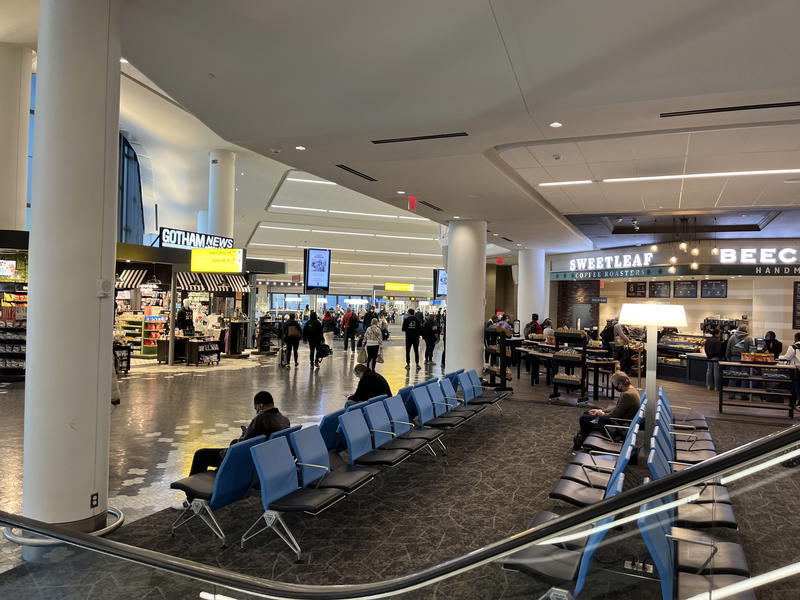
Drink lots of water
Most people get dehydrated when they fly. If you’re taking multiple connecting flights, that means more time in the air, which results in more dehydration. It can tire you out and make you feel deflated.
Make sure to bring a reusable water bottle with you. Fill it up at water fountains you find in the airport.
You can also ask someone from the flight crew to fill up your water bottle with the large bottles of water they keep in the snack area, instead of asking for several disposable cups.
Common mistakes to avoid when choosing a connecting flight
When you book your flight, you’ll notice that you have some options of which flight to choose for your connecting flight.
If you can, see which terminal each flight leaves to and from, and aim for them to be within the same terminal. If they’re not, you might have to go through security again, depending on the airport. Also, keep in mind that terminals can change and be reassigned at the last minute.
Be careful about the amount of time between each connecting flight, as well. Try to leave plenty of time between them so that you don’t miss the connection, if one of your other connecting flights is delayed.
📘 Learning travel terms with us?
We built this glossary to make travel planning clearer. If it helped decode a tricky term, we'd love a coffee so we can keep expanding it.
Support our glossary
